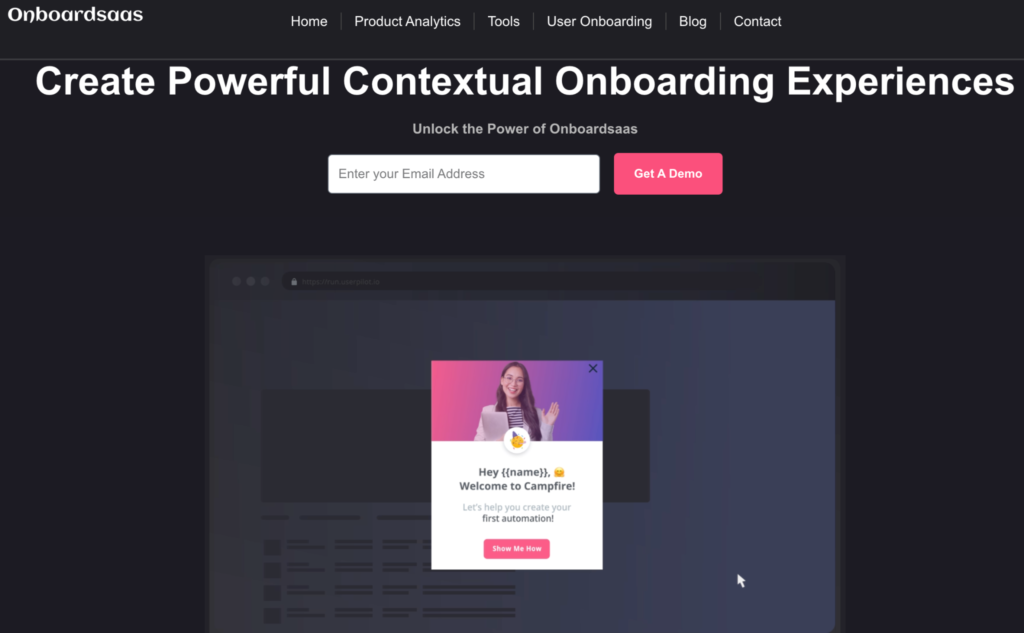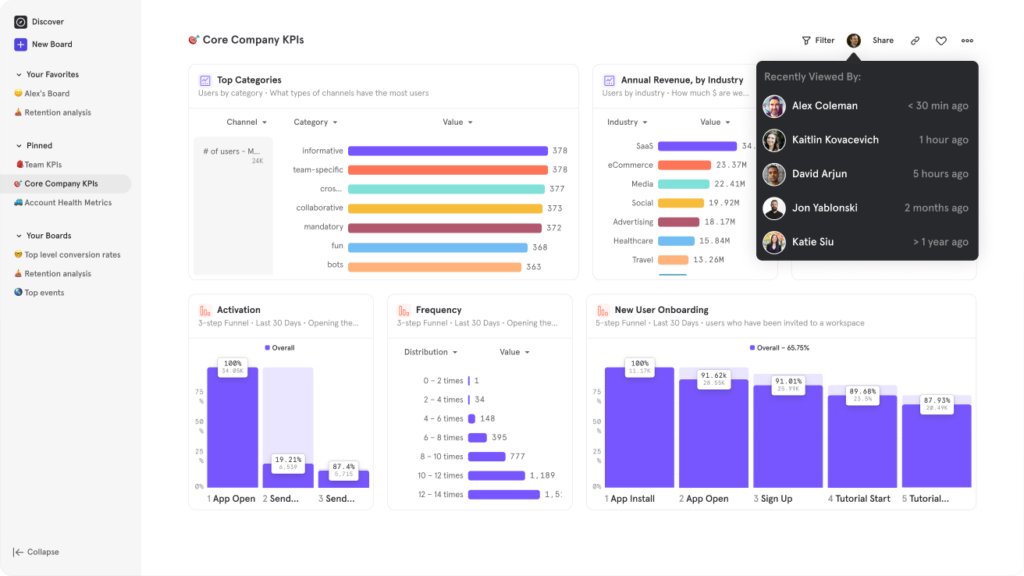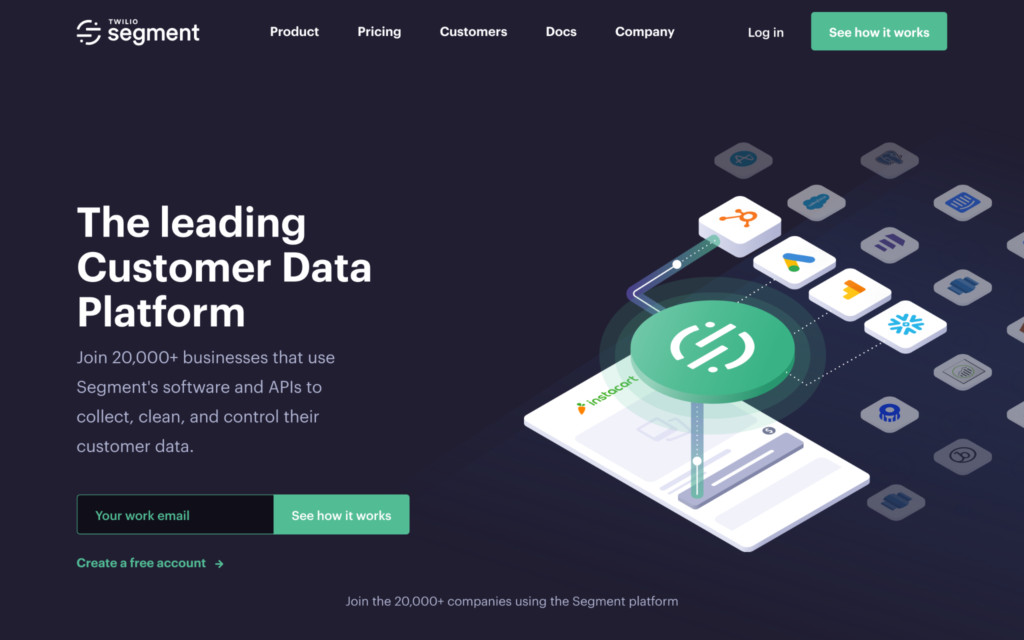The digital world is data-driven, and businesses need to be equipped with the right tools to analyze their product’s performance. In this regard, two platforms often come up: Mixpanel and Segment.
This blog post will compare these two platforms, considering their features, pros and cons, pricing, and how they stack up against an alternative tool, OnboardSaaS.
What is the Difference Between Mixpanel and Segment?
While Mixpanel and Segment are powerful analytics platforms, they have distinct areas of focus that cater to different business needs.
Mixpanel
Mixpanel is a product analytics platform that enables businesses to track user interactions with their web and mobile applications. It is designed around event-based tracking, which captures specific actions or events that users take within your product. These events could be anything from clicking a button, completing a form, purchasing, or visiting a webpage.
By focusing on event-based tracking, Mixpanel allows you to understand not just who your users are but what they do with your product. This opens up possibilities for detailed insights into user behavior, such as funnel analysis, cohort analysis, and retention reports.
For instance, you can track the series of actions that lead to a conversion (funnel analysis), understand how different groups of users behave over time (cohort analysis), or see how many users continue to use your product after a certain period (retention reports).
Segment
On the other hand, Segment operates as a customer data platform (CDP). Instead of focusing solely on event tracking, Segment collects data from your website, mobile apps, servers, and offline sources. It then cleans and organizes this data before sending it to downstream destinations such as analytics platforms, marketing automation tools, data warehouses, and more.
Segment’s strength lies in its ability to act as a data pipeline. It doesn’t specialize in analysis but excels at integrating and routing data. This makes the Segment particularly valuable for businesses that use multiple tools for analytics, marketing, customer service, etc., as it can ensure all these tools are fed consistent and reliable data.
Must-Have Features to Look for in a Product Analytics Solution
When choosing a product analytics solution, there are several key features you should consider:
- Event Tracking: Tracking specific actions or events users take within your product is crucial. This will help you understand not just who your users are but what they do with your product.
- Data Integration: The tool should be able to integrate data from various sources like your website, mobile apps, servers, and even offline sources. It should also be able to route this data to different downstream destinations such as analytics platforms, marketing automation tools, data warehouses, etc.
- Real-Time Analysis: In today’s fast-paced digital world, having access to real-time data analysis can give you an edge. It allows you to spot trends and issues as they occur, enabling you to react quickly.
- User Segmentation: A good product analytics tool should allow you to divide your user base into segments based on behavior, demographics, or other characteristics. This can help you tailor your product and marketing efforts to different user groups.
- Funnel Analysis: The ability to track the series of actions that lead to a conversion is crucial. It can help you identify where users drop off and where improvement opportunities exist.
- Retention Analysis: Understanding how many users continue to use your product after a certain period can give you valuable insights into user satisfaction and loyalty.
Pros and Cons of Using Mixpanel vs. Segment for Product Analytics
Pros of Mixpanel
- In-depth Analysis: Thanks to its focus on event-based tracking, Mixpanel offers detailed insights into user behavior. You can track the series of actions that lead to a conversion, understand how different groups of users behave over time, or see how many users continue to use your product after a certain period.
- Real-Time Data: Mixpanel provides real-time data analysis, allowing you to spot trends and issues as they occur. This can enable you to react quickly and make data-driven decisions.
- User-friendly Interface: Its interface is intuitive and easy to use, even for non-technical users. This can save you time and effort in training and onboarding.
Cons of Mixpanel
- Limited Data Routing: While Mixpanel excels at event-based tracking and analysis, it is less versatile when routing data to different downstream destinations. If you use multiple tools for analytics, marketing, customer service, etc., and need to feed them consistent and reliable data, you might find Mixpanel’s capabilities somewhat limited.
- Costly for Large User Base: Mixpanel’s pricing model is based on the number of users tracked per month. While this can be cost-effective for small businesses or startups with a relatively small user base, it can become quite expensive for larger businesses or those experiencing rapid growth.
Pros of Segment
- Data Integration: The Segment’s strength lies in its ability to integrate data from various sources and route it to downstream destinations. This makes it particularly valuable for businesses that use multiple tools for analytics, marketing, customer service, etc.
- Versatile: Segment can send data to various downstream destinations such as analytics platforms, marketing automation tools, data warehouses, and more. This flexibility can make your data operations more efficient and reliable.
- Scalable: Segment’s pricing model is based on monthly tracked users, similar to Mixpanel. However, as it acts as a data pipeline feeding multiple downstream tools, it can provide more value for businesses with many users or those using multiple tools.
Cons of Segment
- Less Analytical Depth: While Segment excels at data integration and routing, it does not offer the same depth of analysis as Mixpanel. You might find Segment’s analytical capabilities somewhat lacking if you need detailed insights into user behavior.
- Complex Setup: Setting up a Segment can be complex, especially for non-technical users. It may require assistance from a developer or a technical team member, which could lead to additional costs.
Mixpanel vs Segment Pricing
Both Mixpanel and Segment use a pricing model based on the number of users tracked per month. Mixpanel’s pricing starts at $25 monthly for 1000 monthly tracked users, while Segment’s pricing starts at $120 for 10,000. However, Segment pricing can be more cost-effective for businesses with many users, especially using multiple downstream tools.
Mixpanel vs Segment for Product Analytics
Consider your business needs when choosing between Mixpanel and Segment for product analytics. If you need an in-depth analysis of user behavior, Mixpanel may be the better choice. However, Segment may be more suitable if you need a tool to integrate and route data to various destinations. It’s also worth considering the size of your user base and the number of downstream tools you use, as these factors can influence the cost-effectiveness of each tool.
Mixpanel vs Segment: OnboardSaaS is a Better Alternative
While Mixpanel and Segment are both robust tools, OnboardSaaS offers a comprehensive solution that combines both strengths. It provides detailed product analytics, integrates data from various sources, and routes it to destinations. Additionally, it’s designed to be user-friendly and cost-effective.

Pros of Using OnboardSaaS for Product Analytics
- Comprehensive Solution: OnboardSaaS offers both in-depth analysis and versatile data integration. This means you can get detailed insights into user behavior and integrate and route data to various destinations.
- User-Friendly: Its interface is intuitive and easy to navigate, even for non-technical users. This can save you time and effort in training and onboarding.
- Cost-Effective: OnboardSaaS has a flexible pricing model that scales with your business. This can make it a more cost-effective solution, especially for businesses with many users or multiple downstream tools.
Cons of Using OnboardSaaS for Product Analytics
- Newer Platform: As a newer platform, OnboardSaaS may lack some of the advanced features of established platforms like Mixpanel and Segment. However, it’s continuously improving and adding new features.
- Limited Integrations: While OnboardSaaS can integrate with many popular tools, it may not integrate with as many third-party tools as Mixpanel or Segment. However, its team is continuously working on adding new integrations.
Mixpanel, Segment, and OnboardSaaS all offer valuable services for product analytics. The best tool for your business will depend on your specific needs, the size of your user base, and your budget. It’s worth evaluating each tool and considering how well they align with your business goals and resources.
Conclusion
The comparisons and insights discussed above between Mixpanel, Segment, and OnboardSaaS show that each platform offers distinct advantages and disadvantages tailored to different business needs.
Mixpanel shines with its in-depth analytical capabilities, which are ideal for businesses focused on detailed user behavior analysis. Segment, on the other hand, excels in data integration and routing, serving businesses that leverage multiple analytics and marketing tools effectively.
OnboardSaaS emerges as a comprehensive alternative, marrying the strengths of both Mixpanel and Segment with a user-friendly interface and cost-effectiveness, making it a viable option for businesses seeking a balance between analytical depth and data integration breadth.
Ultimately, the choice hinges on your specific needs, considering the scale of your operations and the complexity of your data analytics requirements. Further exploration of these platforms is recommended to make an informed decision that aligns with your business goals and maximizes your analytical and operational efficiencies.
To better understand how Mixpanel, Segment, and OnboardSaaS.com can cater to your specific product analytics needs and enhance your data-driven decision-making process, click “Learn More.”
FAQs
What is the main difference between Mixpanel and Segment?
Mixpanel specializes in event-based tracking, providing detailed insights into user behavior within a product. On the other hand, the Segment acts as a customer data platform, collecting data from various sources and routing it to different downstream destinations
How do the pricing of Mixpanel and Segment compare?
Both Mixpanel and Segment base their pricing on the number of users tracked per month. However, Segment’s pricing can be more cost-effective for businesses with many users
Can Mixpanel and Segment be used together?
Many businesses use Segment as a data pipeline to route data to Mixpanel for in-depth analysis. This combination enables a two-way interaction, providing comprehensive insights into the customer journey
Which is better for real-time analysis: Mixpanel or Segment?
Mixpanel provides real-time data analysis, allowing businesses to spot trends and issues as they occur. Segment, while it integrates and routes data efficiently, doesn’t specialize in real-time analysis
Is there an alternative to both Mixpanel and Segment?
Yes, tools like Pendo and Amplitude offer similar analytics services. Additionally, platforms like OnboardSaaS.com provide a comprehensive solution combining in-depth analysis and versatile data integration

10+ years experience in Marketing and Operations







This is an amazing page. The outstanding information reveals the owner’s accountability. I’m in awe and eagerly await more amazing postings like this one.